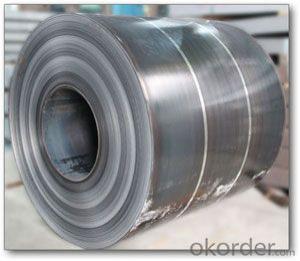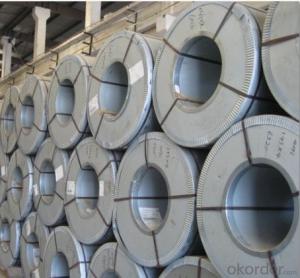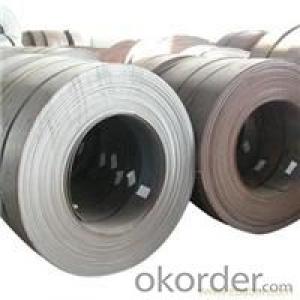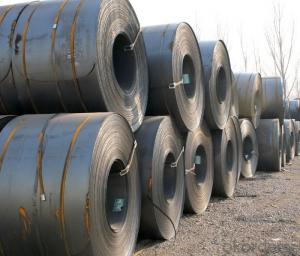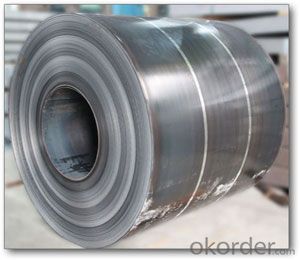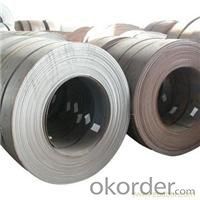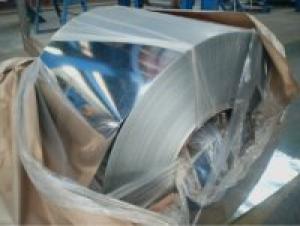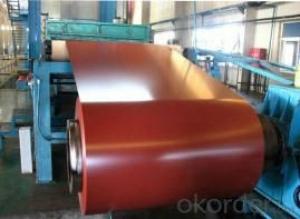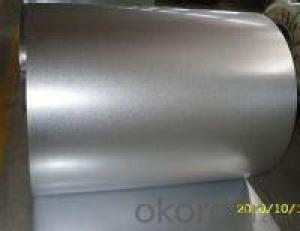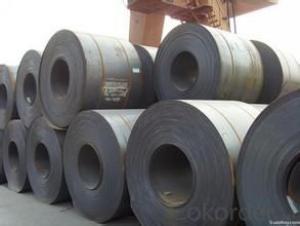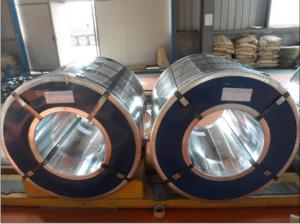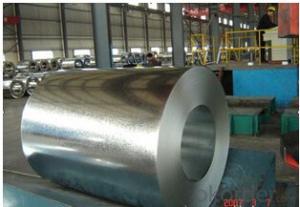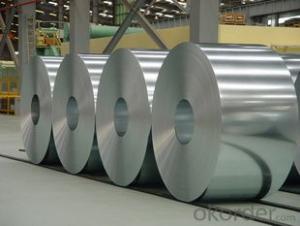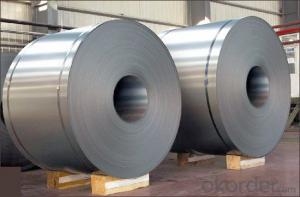HOT-ROLLED STEEL COIL WITH HIGH QUALITY NO.1
- Loading Port:
- Shanghai
- Payment Terms:
- TT OR LC
- Min Order Qty:
- 50 m.t.
- Supply Capability:
- 50000 m.t./month
OKorder Service Pledge
OKorder Financial Service
You Might Also Like
HOT-ROLLED STEEL COIL
Hot rolled low hardness, easy processing, good ductility.
Available specification:
thickness | width(mm) | length(mm) | coil inside diameter(mm) | |
HOT ROLLED STEEL COIL | 1.5-25 | 600-2000 | 762 | |
HOT ROLLED STEEL STRIP | 1.5-20 | 30-720 | 762 | |
HOT ROLLED STEEL PLATE | 6-700 | 500-4500 | 4000-18000 | |
HOT ROLLED STEELSHEET | 1.2-25 | 50-2000 | 0-18000 |
We can supply customers' with different specifications of the highest quality and lowest price.
With excellent cold bending molded manufacturablity, good decoration effect, strong anti-corrosion ability, galvanized steel coils and sheets are also pollution-free and easily recycled. Accordingly, they can be used as final products and basic plates of color coated steel coils.
Sincerely welcome to contact us for the future details if any item interest you ,and we will make every effort to assure that your requirements will be satisfied ,and we hope to establish long-term business relations with you on the basis of the equality and mutual benefit.
We are waiting for your email.
- Q: Can cold rolled galvanized steel coils be acid washed after oxidation?
- If it has been galvanized, it can not be pickled, and if it is pickled, it may corrode the zinc layer
- Q: What is the average tensile strength of a steel coil?
- The average tensile strength of a steel coil can vary depending on the specific type and grade of steel being used. However, on average, steel coils tend to have a tensile strength ranging from 300 to 2,000 megapascals (MPa).
- Q: How many types of steel buildings are there?
- There are a number of designs which can be used to create different types of steel buildings as per the demands of the buyer or an investor. he various kinds of that can be constructed using steel are Homes, Hangars, Agriculture and Farm buildings for storage, Garages and Storage sheds, Open air sheds,, Barns, Arenas and stadiums, Automotive buildings with overhead doors and flexible framed openings, Religious buildings such as Churches and Temples, etc.
- Q: What is the difference between carbon steel and spring steel?? And which is the better one to make swords with??
- High Carbon Spring Steel
- Q: How do steel coils withstand extreme temperatures?
- Steel coils are able to withstand extreme temperatures due to the unique properties of steel. Firstly, steel has a high melting point, allowing it to maintain its structural integrity even at extremely high temperatures. Additionally, steel has excellent thermal conductivity, which enables it to evenly distribute and dissipate heat. Furthermore, steel undergoes various heat treatment processes during manufacturing, such as quenching and tempering, which enhance its strength and resistance to temperature fluctuations. Overall, these factors make steel coils highly capable of withstanding extreme temperatures.
- Q: How are steel coils used in the manufacturing of metal furniture?
- Steel coils play a vital role in the production of metal furniture as they are an essential component. Typically made from high-quality steel, these coils add strength, durability, and stability to the furniture. To incorporate steel coils into the manufacturing process, the first step involves cutting them to the desired length and width. This precise task is accomplished using specialized machinery and tools to ensure accurate dimensions for the furniture components. Once the coils are cut, they undergo shaping and forming processes to create various furniture parts such as chair frames, table bases, or cabinet structures. These coils can be bent, welded, or manipulated to achieve the desired shapes and designs. After the shaping process, additional treatments are applied to the steel coils to enhance their aesthetic appeal and provide protection against corrosion. This includes sanding, polishing, and the application of protective coatings or finishes to create a smooth and visually appealing surface for the furniture. In addition to their structural support and visual appeal, steel coils greatly contribute to the overall functionality of metal furniture. They possess excellent load-bearing capacity, ensuring that the furniture can withstand weight and pressure without bending or breaking. Furthermore, steel coils make metal furniture highly resistant to wear and tear, making it suitable for both indoor and outdoor use. With the ability to endure harsh weather conditions, these coils are particularly ideal for patio furniture or outdoor seating arrangements. In conclusion, steel coils are indispensable in the manufacturing of metal furniture as they provide essential strength, durability, and aesthetic appeal. Their versatility and reliability have made them the preferred choice for furniture manufacturers worldwide.
- Q: What are the key players in the steel coil manufacturing industry?
- Large multinational companies with significant market share and influence dominate the steel coil manufacturing industry. Among the prominent players are: 1. ArcelorMittal, the world's largest steel producer, operates in over 60 countries and offers a diverse product portfolio. 2. Nippon Steel Corporation, a leading Japanese steelmaker, holds a prominent position in the global steel coil manufacturing market, particularly in the automotive and construction sectors. 3. POSCO, based in South Korea, is renowned for its high-quality steel products and advanced technology in steel coil manufacturing. 4. Baosteel Group Corporation, the largest steel manufacturer in China and globally, boasts a vast range of steel products, including steel coils, and excels in research and development capabilities. 5. Thyssenkrupp AG, a German multinational conglomerate, plays a significant role in the steel coil manufacturing industry, focusing on innovation and sustainability across a diverse product range. 6. United States Steel Corporation, a leading American steel producer, holds a crucial position in the steel coil manufacturing industry, particularly in the automotive, construction, and energy sectors. 7. JFE Holdings, Inc., a Japanese steel conglomerate, is a key player in the steel coil manufacturing industry, known for its customer-oriented approach and high-quality steel products. These companies represent a fraction of the key players in the steel coil manufacturing industry, as numerous others contribute to this sector. The industry is highly competitive, and these companies consistently strive to innovate, enhance efficiency, and meet the evolving demands of the market.
- Q: How are steel coils used in the manufacturing of electrical components?
- Steel coils are commonly used in the manufacturing of electrical components as they provide a sturdy and reliable framework. They are used to create magnetic cores, which play a crucial role in transformers, motors, and generators. Additionally, steel coils are utilized in the production of inductors and solenoids, where they help generate and control magnetic fields. Overall, steel coils are essential in electrical component manufacturing due to their ability to enhance the efficiency and functionality of these devices.
- Q: How are steel coils protected from extreme weather conditions?
- Steel coils are typically protected from extreme weather conditions through the application of a weather-resistant coating or paint. This coating acts as a barrier, shielding the steel from moisture, UV radiation, and other environmental elements that could cause corrosion or damage. Additionally, steel coils may be stored in covered or enclosed areas to further protect them from rain, snow, and other severe weather conditions.
- Q: I wrote in my assignment that mild steel has a high carbon content (4%).This is why it has its strong and rigid properties.. is this correct?
- High carbon steel is much harder than iron. In fact, steel -is- iron with carbon in it. Mild steel has a very low carbon content and is much softer. High carbon steel is much stronger after heat treatment. However, about 2% carbon, it is considered cast iron. Mild steel contains about 0.16% to 0.29% carbon content. It has a relatively low strength but is highly malleable.
Send your message to us
HOT-ROLLED STEEL COIL WITH HIGH QUALITY NO.1
- Loading Port:
- Shanghai
- Payment Terms:
- TT OR LC
- Min Order Qty:
- 50 m.t.
- Supply Capability:
- 50000 m.t./month
OKorder Service Pledge
OKorder Financial Service
Similar products
Hot products
Hot Searches
Related keywords
